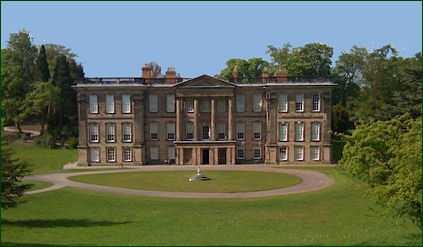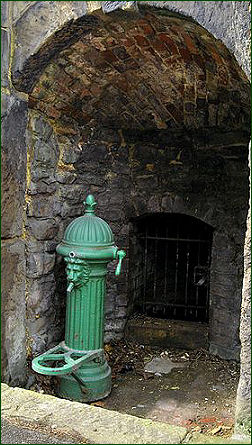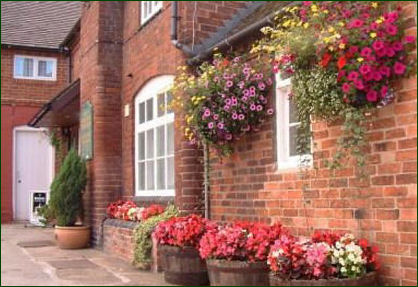Ticknall
OS Grid ref:-

 The pretty and unspoilt village of Ticknall is located near to the Georgian market town of Melbourne
The pretty and unspoilt village of Ticknall is located near to the Georgian market town of Melbourne
Calke Abbey (pictured left), now in the ownership of the National Trust is situated near to the village. Calke Abbey was formerly the site of an Augustinian priory dating from the twelfth century .
Ticknall is mentioned in the Domesday Book of 1086 where it is referred to as , Tichenhalle and probably existed from Anglo-Saxon times. Ticknall was an estate village to Calke Abbey until late in the twentieth century. It experienced its heyday in the late eighteenth and early nineteenth centuries, when the limeyards and the brickmaking, tile and pottery industries were operating at maximum capacity. From the sixteenth to the eighteenth centuries, Ticknall also had a thriving pottery industry. "Ticknall Ware" was known throughout the Midlands and fragments of itn can be picked up everywhere around the village today
The village boasts three pubs, The Wheel, The Staff of Life (pictured left) and the Chequers Inn, which dates back to the seventeenth century. Several water pumps can be found scattered through thre village. These introduced into the village around 1914 by Sir Harper Crewe to, what was then, the estate village to provide fresh water. Several of these unusual pumps still operate and are still used by walkers.
 The almshouses in the village were founded in 1772 for the benefit of the elderly and poor and were financed by a member of the Harpur-Crewe family of Calke Abbey. The Roundhouse or lock up was constructed in 1809 to provide overnight accommodation for those arrested in the village before they were taken off to Derby.
The almshouses in the village were founded in 1772 for the benefit of the elderly and poor and were financed by a member of the Harpur-Crewe family of Calke Abbey. The Roundhouse or lock up was constructed in 1809 to provide overnight accommodation for those arrested in the village before they were taken off to Derby.
Reference is made to a chapel at Ticknall in a charter of circa 1200 concerning the exchange of land. The original church, which had been dedicated to St Thomas a Becket, was blown up with gunpowder. Its ruins are still to be seen in the present churchyard. A new church designed by H.I. Stevens in the Gothic Revival style was built in 1842. It has two stained glass windows by Morris & Co.
Nearby places of interest
Tutbury Castle a largely ruinous medieval castle, which is owned by the Duchy of Lancaster and boasts an extraordinary history.
Dovedale, a dramatic limestone ravine, with its mpressive rock outcrops and tranquil woodlands is arguably the prettiest of the dales in the Peak District National Park and is owned by the National Trust.
The Manifold Valley, which runs almost parallel with Dovedale, has been described as the 'Switzerland of Staffordshire' and offers some of the most spectacular scenery in the Peak District National Park.
Biddulph Grange, one of Britain's most exciting and unusual gardens, was created by the horticulturalist James Bateman (1811–1897), for his large collection of plants from around the world.
Haddon Hall near Bakewell, is an architectural gem. Dating back to the eleventh century, the hall has been described as "the most complete and most interesting house of [its] period", it is the finest example of a medieval manor house currently in existence in England.
